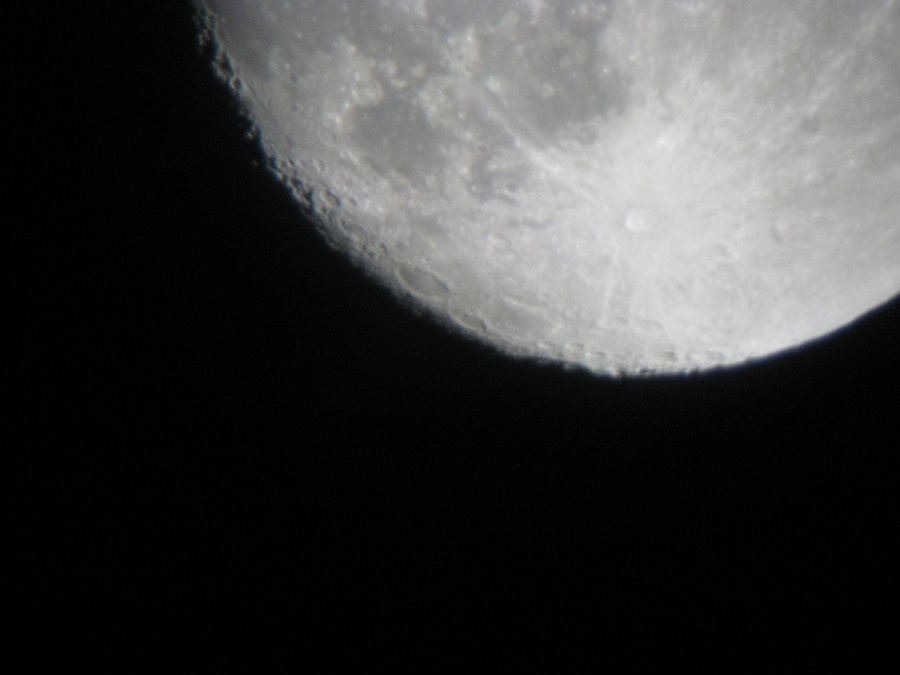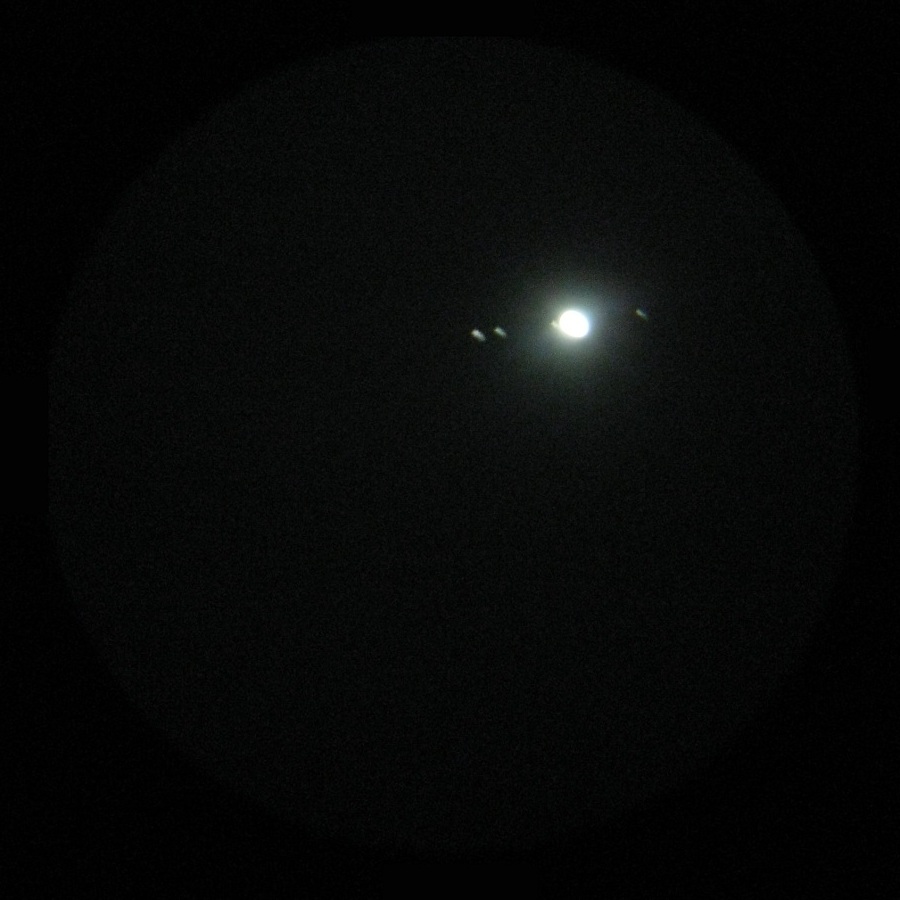Telescope shots- September 2009
Normally I don't bother setting up the old Tasco when the Moon is bright, especially here in Newark, with its murky, light-polluted sky, but a while back it was unusually clear and cool, and Jupiter was in a good spot to see it from the kitchen window. I will probably be making a proper camera mount soon, but these were shot just holding my little SD1100 as steady as I could next to the eyepiece. Tried it with a tripod and it was just too much trouble. So... they're a little blurry.
All of these have been rotated to show them as they might appear to the naked eye (the 'scope inverts the field of view, and I forgot that when taking the pics).
Full of view of the waxing gibbous Moon; 20X eyepiece.

Closer look at the south polar region; pretty good view of Tycho (the small crater with the very bright, long rays) and Shickard (the shallow but very wide crater to the left, near the shadow line). Used the Barlow extension for this (doubles the magnification).

Very hard to hold the camera still enough, but this isn't too bad, considering... Jupiter and its four primary moons. Just the 20X eyepiece again. Normally, when the scope is collimated properly and the air is still and dry, with my scope you can just barely make out the cloud bands of Jupiter, and the rings of Saturn are pretty clear, too.
I may get some clearer pictures later, if I ever get around to making that mount. Might even get some decent long-exposure shots of some more distant objects.

All of these have been rotated to show them as they might appear to the naked eye (the 'scope inverts the field of view, and I forgot that when taking the pics).
Full of view of the waxing gibbous Moon; 20X eyepiece.
Closer look at the south polar region; pretty good view of Tycho (the small crater with the very bright, long rays) and Shickard (the shallow but very wide crater to the left, near the shadow line). Used the Barlow extension for this (doubles the magnification).
Very hard to hold the camera still enough, but this isn't too bad, considering... Jupiter and its four primary moons. Just the 20X eyepiece again. Normally, when the scope is collimated properly and the air is still and dry, with my scope you can just barely make out the cloud bands of Jupiter, and the rings of Saturn are pretty clear, too.
I may get some clearer pictures later, if I ever get around to making that mount. Might even get some decent long-exposure shots of some more distant objects.


 And the first time you manage to resolve a bright point of light into a gas giant with its attendant moons... it's just cool. 8-)
And the first time you manage to resolve a bright point of light into a gas giant with its attendant moons... it's just cool. 8-)